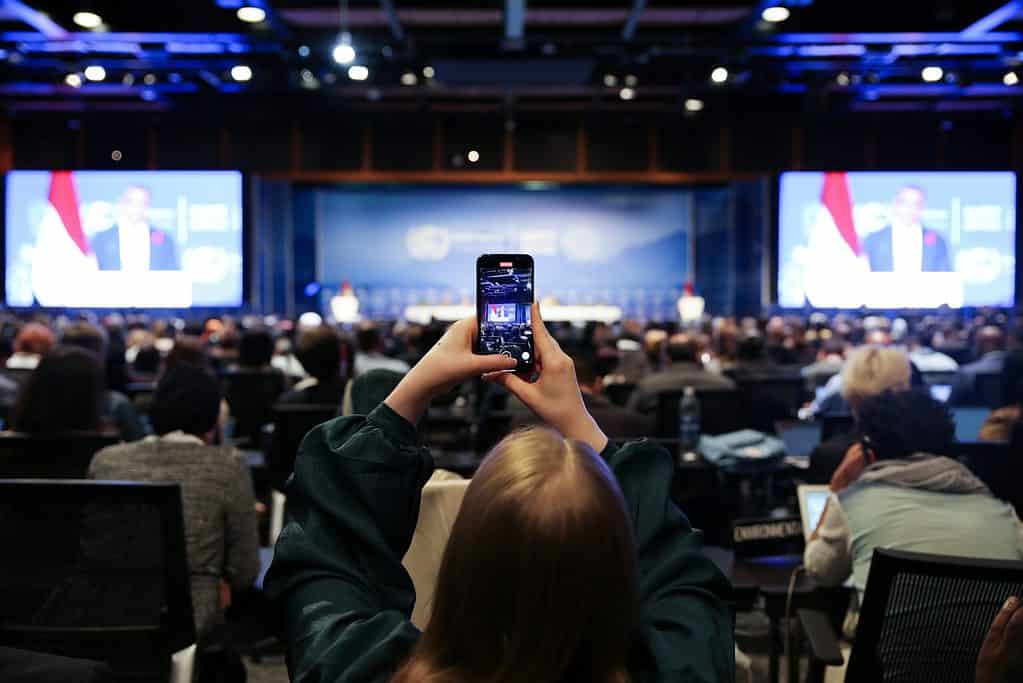The resort town of Sharm el-Sheikh in Egypt is known for its lovely sandy beaches, luxury hotels, and coral reefs. But from now on, it may also become known as one of the worst hosts of the United Nations climate summit so far — not only because of the outcome of the summit, which has been largely disappointing, but also because of the way it was organized.

Every year, over 30,000 politicians, activists, scientists, and other attendees fly off to the two-week annual UN climate conference to try to find a way to tackle the climate crisis. The location of the conference rotates every year, with countries volunteering to host it. This time it was Egypt’s turn, specifically in Sharm el-Sheikh. Next year it will be Dubai and then somewhere in Eastern Europe.
Getting to Sharm from Argentina, where I’m based, took over 24 hours and several connections. Once at the airport, I was welcomed with only 15 minutes of free Wi-Fi and a one-hour queue to get a local sim card. It turns out, it was Vodafone handing the cards — one of the conference’s sponsors alongside Coca-Cola.
The first step to orientate myself was downloading the summit’s mobile app, a usual thing at COP summits. The app lists schedules for the conference, includes timetables for buses, and carries speaker profiles. But to download it I was asked for my nationality, passport number, and mobile number and for the location tracking to always be turned on — a pretty questionable practice and one that would make any journalist raise their eyebrow.
This seemed very strange, so I decided not to download it. Turns out, it was a good call. A technical review of the app by POLITICO shows that the app is basically spyware and by using it you essentially are giving permission to the Egyptian government to read your emails and messages. On Android phones, it can even allow the government to listen to users’ conversations.
Reports from the German federal police, or BKA, warned their country’s delegates by email of “overt and covert surveillance through photography and videography” by Egyptian agents, media reports showed. The UN Department for Safety and Security said it was made aware of the allegations. The Egyptian government denied all accusations.
With hundreds and hundreds of international journalists attending the conference and expected to download the app, this already seemed very dubious — especially considering how Egypt is hounding its own reporters. Groups like Human Rights Watch have emphasized that in Egypt, political dissent is silenced and tens of thousands have been jailed. Alaa Abd el-Fattah, a jailed Egyptian activist, actually started a hunger and water strike during COP27.
The challenging venue
Now, let’s take a look at what it meant to spend two weeks in Sharm, aside from being possibly monitored by the authorities. Egypt set up a network of six lines of public buses in the city to get from the fancy hotels to the COP venue, the Tonino Lamborghini International Convention Center, located in the middle of the desert.
The venue was truly massive, but during the first few days, they hadn’t finished setting things up, which meant most people got lost quite a lot. There are country pavilions, where each one does its own activities, a media center, where I’ve spent most of the time, press conference rooms, and plenary rooms for countries to do the true negotiations.
While outside it was very hot, nearly 30 degrees Celsius, every closed room was freezing, with massive industrial-size air conditioners powered by fossil fuels — at a climate conference. Egypt has said the conference would be “carbon neutral” by using renewable energy, energy efficiency, e-mobility, and adopting a waste management process. But it all sounds very vague at best, and more like greenwashing.
Being a journalist at COP means spending over 12 hours inside the venue. This means food becomes a basic need. However, the conference organizers made this very difficult. Food usually ran out at around 2 pm, with very limited options of what can be purchased. Getting an overpriced sandwich of about $11 meant waiting in line for about an hour.
Then, there was the water. The media center had some water coolers, but they always ran out in the morning and were never replenished. This left Coca-Cola as the only option. At first, they charged $2.5 for a bottle, and then, probably after all the criticism from the conference participants, they started handing over free bottles. Having Coca-Cola, a major plastic polluter, as a sponsor is already questionable enough — but this was just cruel.
The conference venue is also packed with security guards that watch your every move, from taking a photo to attending a press conference.
For civil society organizations, the ‘security’ was even more severe. Before the conference even started, Egyptian authorities arrested hundreds of people and protesting at the event was very dangerous. Since civil members are the ones that usually put pressure on governments by holding protests at COP, this move was not only a human rights problem, but it actively worked against the spirit of the conference.
Ultimately, the climate crisis won’t be solved by a summit, even if it’s the best organized summit in the world. But doing things right could have at least given strong signals of action and encouraged world leaders to take the problem more seriously. But in Egypt, this didn’t happen. It’s hard to see it happening in Dubai as well.


